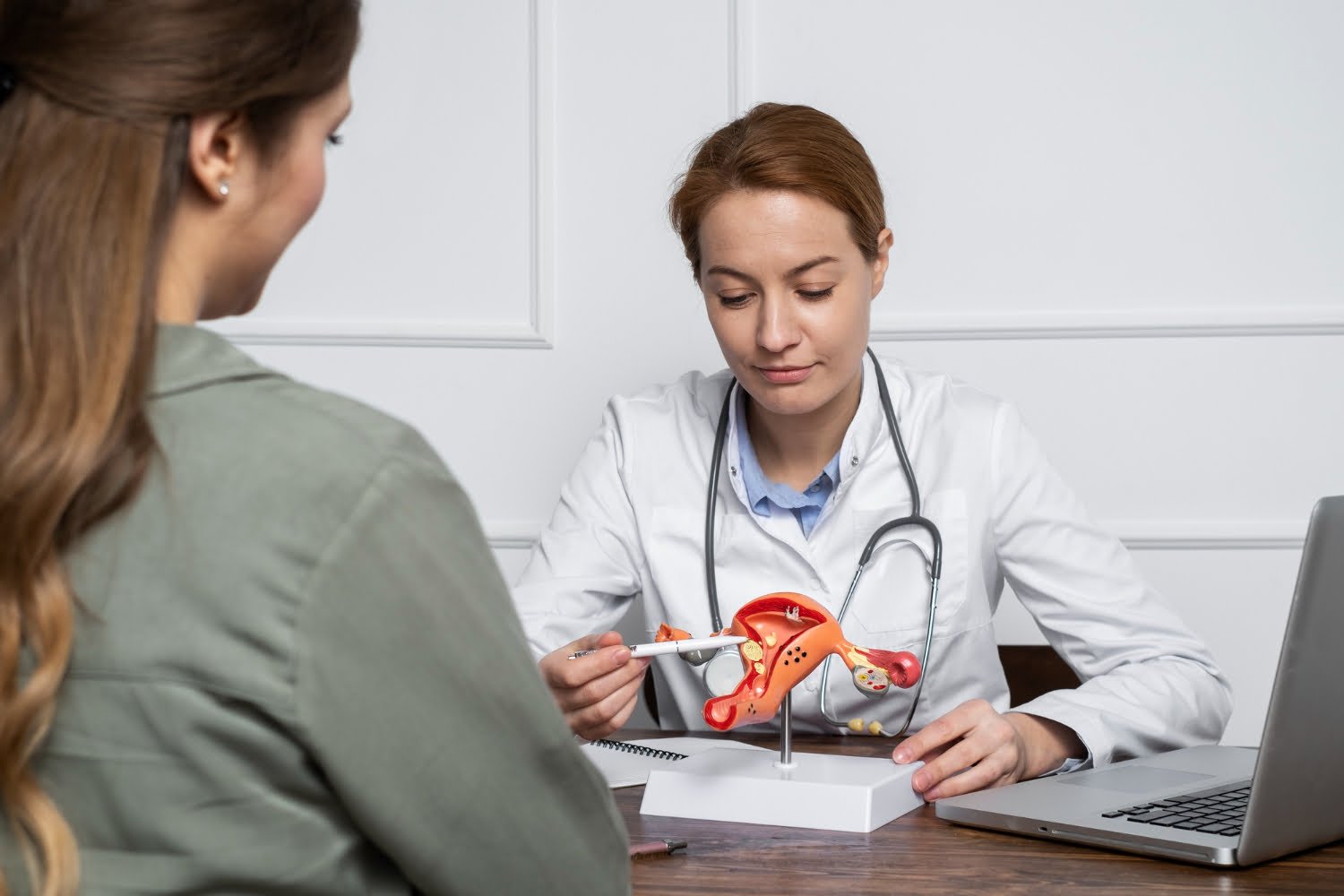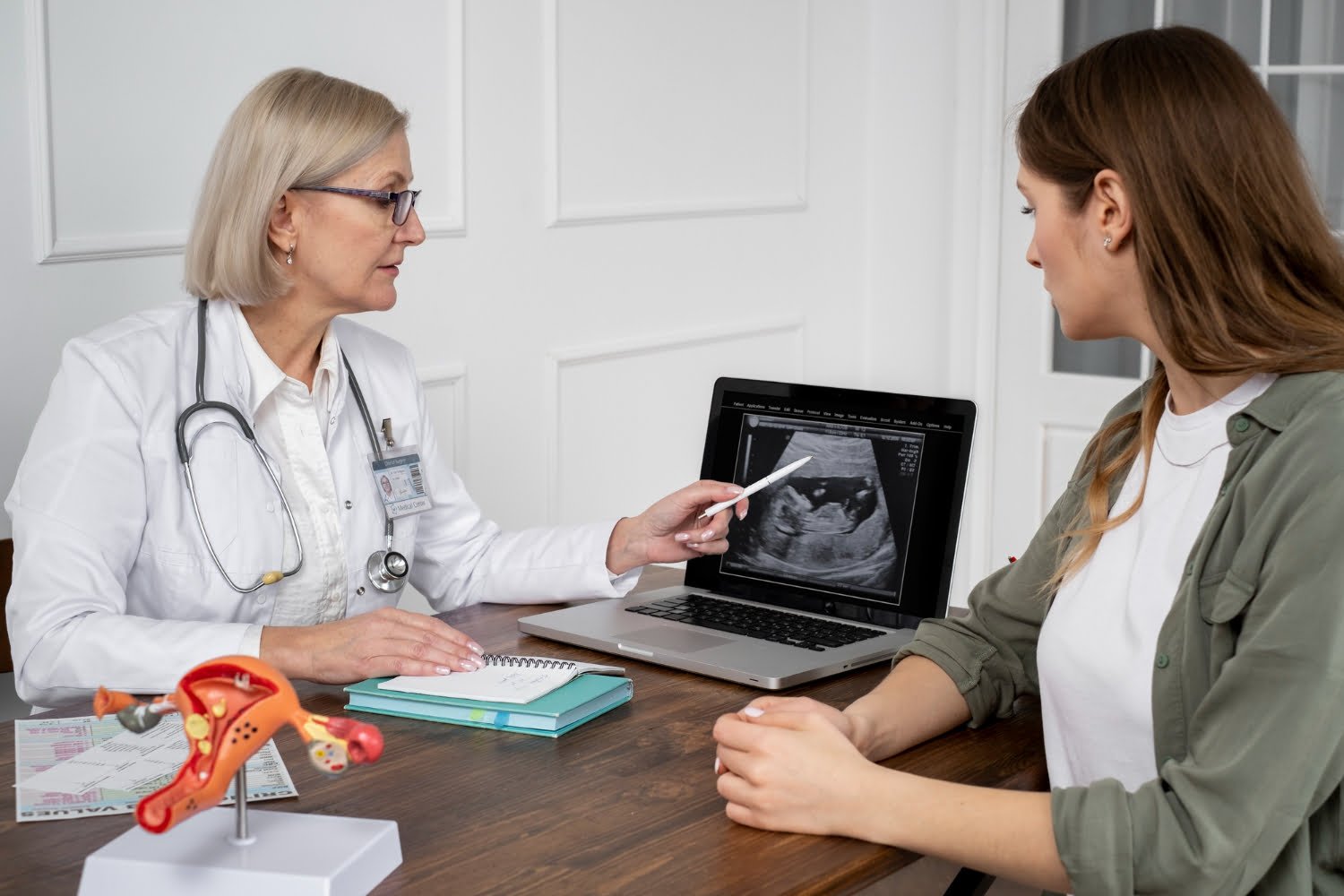Foods To Shrink Uterine Fibroids- Uterine fibroids are non-cancerous growths that develop in or around the uterus. While they are generally harmless, they can sometimes cause uncomfortable symptoms such as heavy or prolonged periods, pelvic pain, bloating, frequent urination, and even fertility issues in some cases. The exact cause of fibroids is still not fully understood, but factors like hormonal imbalances (especially excess estrogen), genetics, and lifestyle choices play a significant role in their growth.
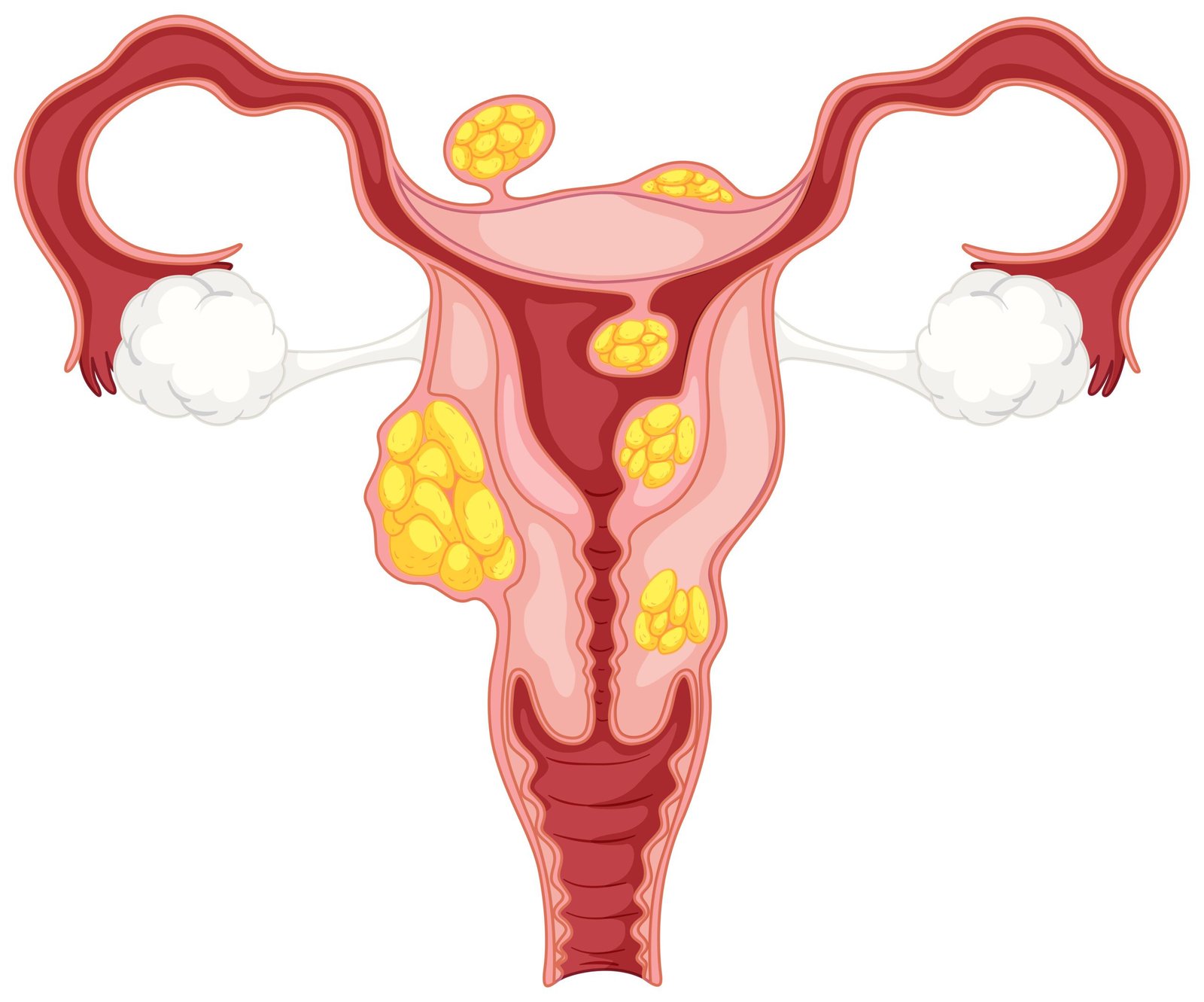
While medical treatments such as medications, hormone therapy, or surgery are available, many women prefer to explore natural ways to manage fibroids, especially through diet and lifestyle changes. Certain foods have been shown to balance hormones, reduce inflammation, detoxify the liver, and slow fibroid growth over time. In this blog, we will explore 12 powerful foods that can help shrink uterine fibroids naturally and promote overall reproductive health.
Top Foods To Shrink Uterine Fibroids You Must Add To Your Diet!
1. Green Leafy Vegetables
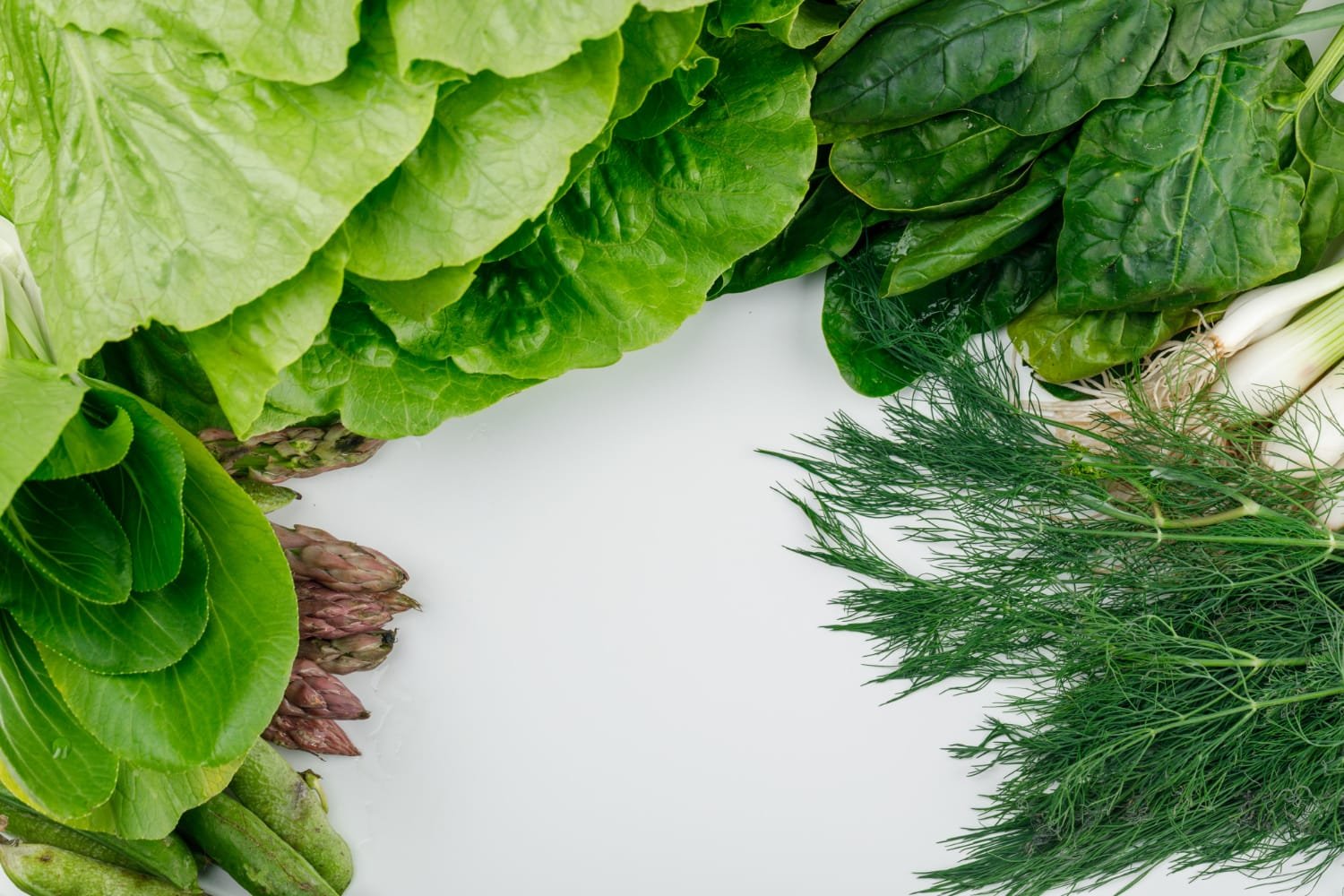
Green leafy vegetables like spinach, kale, and collard greens are excellent for managing uterine fibroids due to their high content of fiber, vitamins, and minerals. These vegetables help detoxify the body and support hormone balance, essential for controlling fibroid growth. They are also rich in antioxidants that fight inflammation and reduce oxidative stress, both of which can contribute to the growth of fibroids.
Additionally, the fiber in leafy greens helps regulate estrogen levels, as excess estrogen is a known factor in the development and growth of uterine fibroids. Including these vegetables in your daily meals can support overall reproductive health and may help manage fibroids naturally.
2. Citrus Fruits
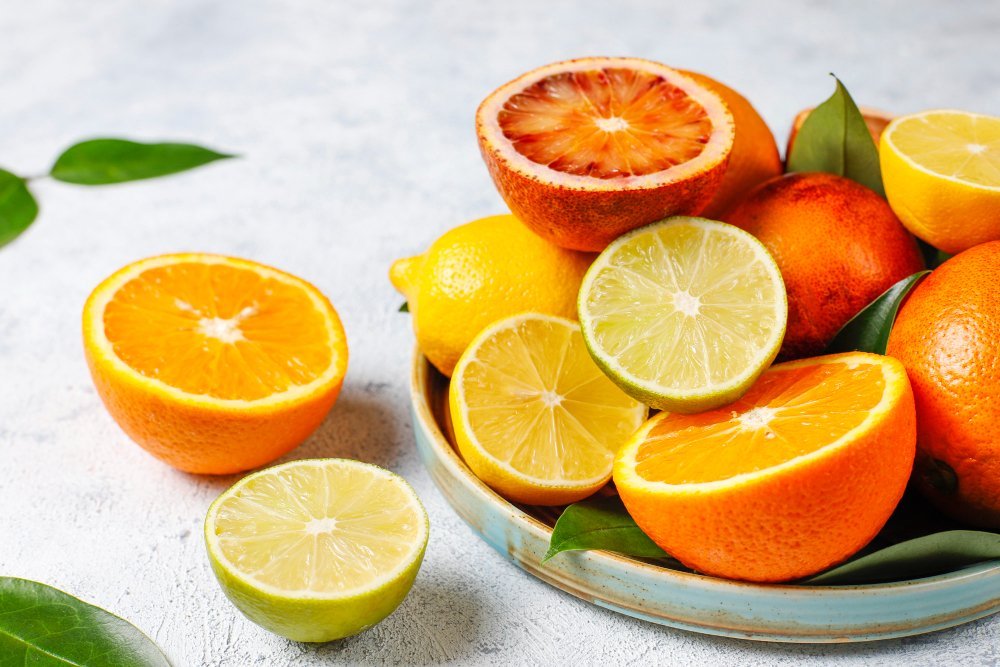
Citrus fruits like oranges, lemons, and grapefruits are packed with vitamin C and bioflavonoids, which are known for their anti-inflammatory and antioxidant properties. These nutrients help to reduce oxidative stress in the body and support the healthy metabolism of estrogen, a hormone often linked to fibroid growth.
By balancing estrogen levels and reducing inflammation, citrus fruits can play a key role in shrinking uterine fibroids and alleviating some of the discomfort they cause. Regularly including citrus fruits in your diet can also help detoxify the body, improving overall reproductive health.
3. Turmeric
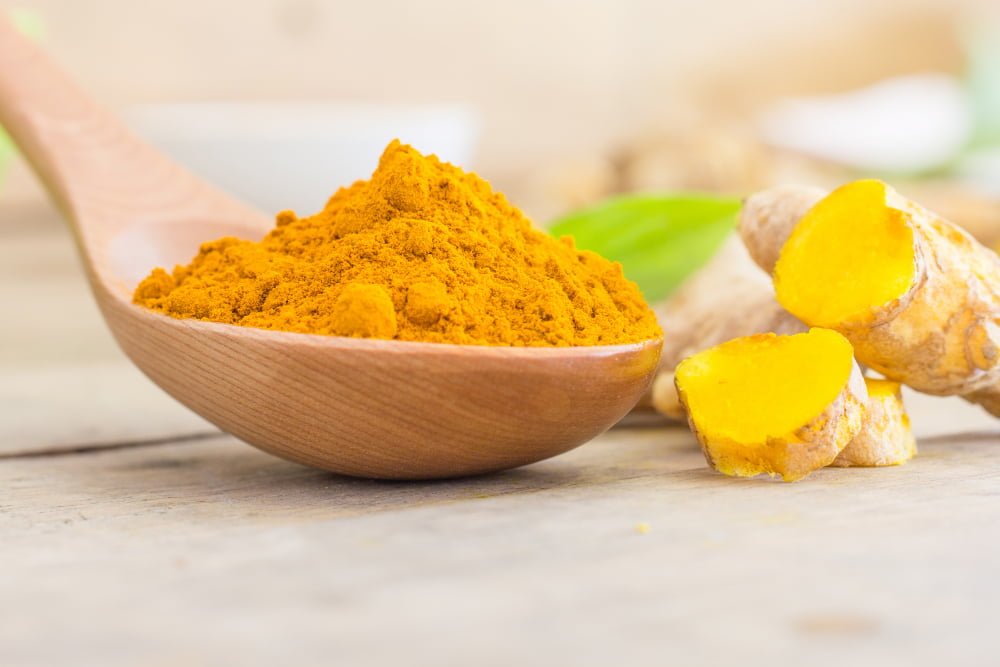
Turmeric is a powerful natural remedy for uterine fibroids due to its active compound, curcumin, which has strong anti-inflammatory and antioxidant properties. Curcumin helps reduce inflammation, which is a key factor in fibroid growth, and it also works to balance estrogen levels, as excess estrogen is linked to the development and growth of fibroids.
Additionally, turmeric supports liver detoxification, aiding in the removal of excess hormones from the body. Consuming turmeric regularly, whether in curries, teas, or smoothies, can help slow down fibroid growth and reduce symptoms like pain and bloating.
4. Garlic and Onions
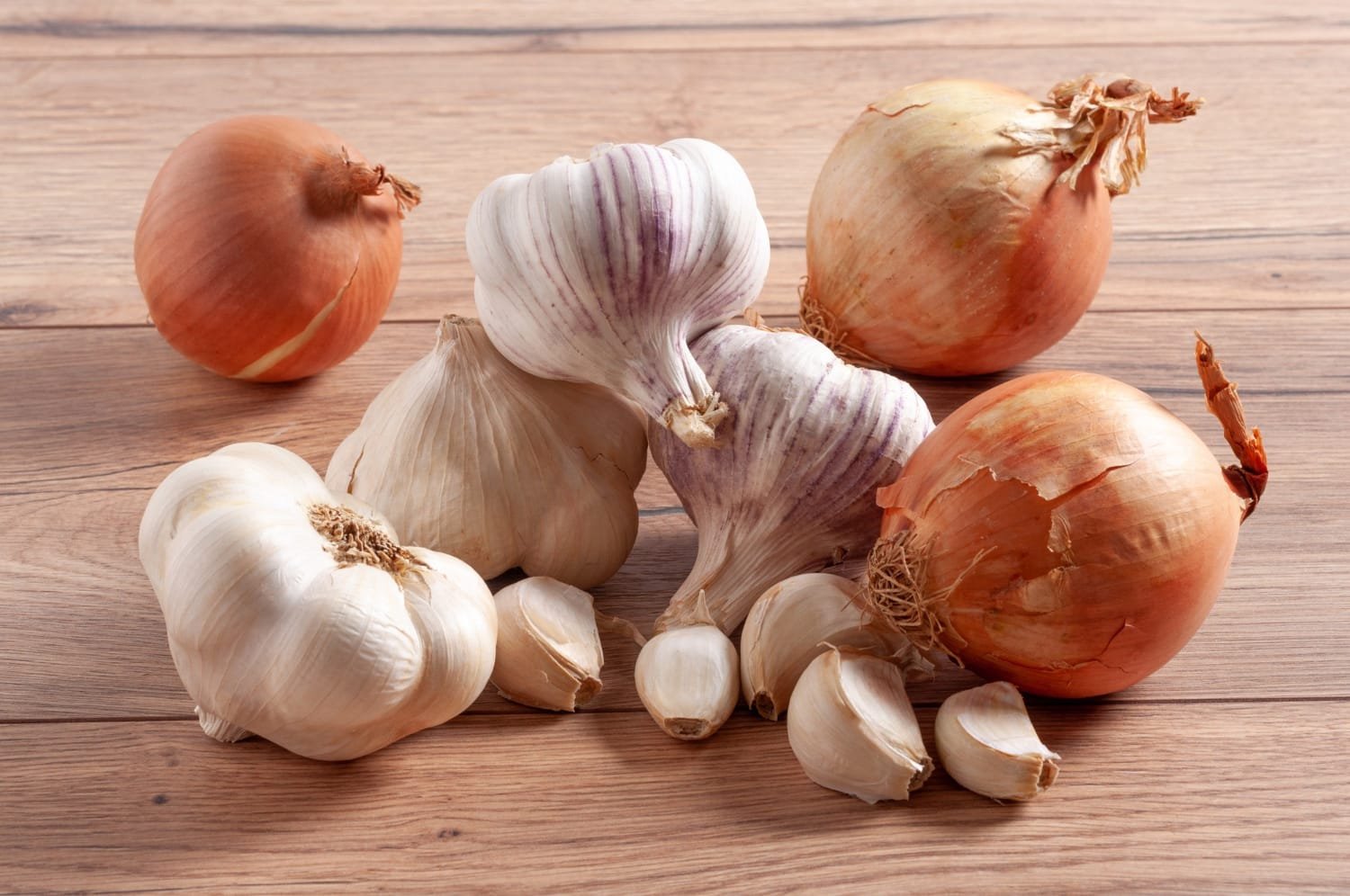
Garlic and onions are both powerful natural foods that can help manage uterine fibroids due to their rich content of antioxidants, sulfur compounds, and phytochemicals. These compounds aid in detoxifying the liver, which plays a crucial role in hormone regulation.
Since fibroids are often influenced by excess estrogen, garlic and onions help balance estrogen levels in the body, potentially reducing fibroid growth. Additionally, both garlic and onions have anti-inflammatory properties, which can help alleviate pain and discomfort associated with fibroids. Including these foods in your diet regularly can promote better hormonal balance and overall reproductive health.
5. Flaxseeds
 Flaxseeds are an excellent food choice for managing uterine fibroids due to their high content of lignans, which help balance estrogen levels in the body. Estrogen dominance is often linked to the growth of fibroids, and flaxseeds can support the healthy elimination of excess estrogen.
Flaxseeds are an excellent food choice for managing uterine fibroids due to their high content of lignans, which help balance estrogen levels in the body. Estrogen dominance is often linked to the growth of fibroids, and flaxseeds can support the healthy elimination of excess estrogen.
Additionally, flaxseeds are rich in omega-3 fatty acids and fiber, which have anti-inflammatory properties and help regulate hormones. Consuming ground flaxseeds regularly may reduce fibroid growth and alleviate some of the symptoms associated with fibroids, such as heavy bleeding and pelvic discomfort.
6. Berries (Blueberries, Strawberries, Raspberries)

Berries like blueberries, strawberries, and raspberries are rich in antioxidants, particularly vitamin C and flavonoids, which help fight oxidative stress and inflammation in the body. These antioxidants play a crucial role in protecting the body from harmful effects caused by excess estrogen, a hormone linked to fibroid growth.
Berries also help improve liver function, which is essential for detoxifying and balancing hormones. Regular consumption of berries may help reduce inflammation, prevent further fibroid growth, and promote overall reproductive health.
7. Whole Grains (Brown Rice, Quinoa, Oats)
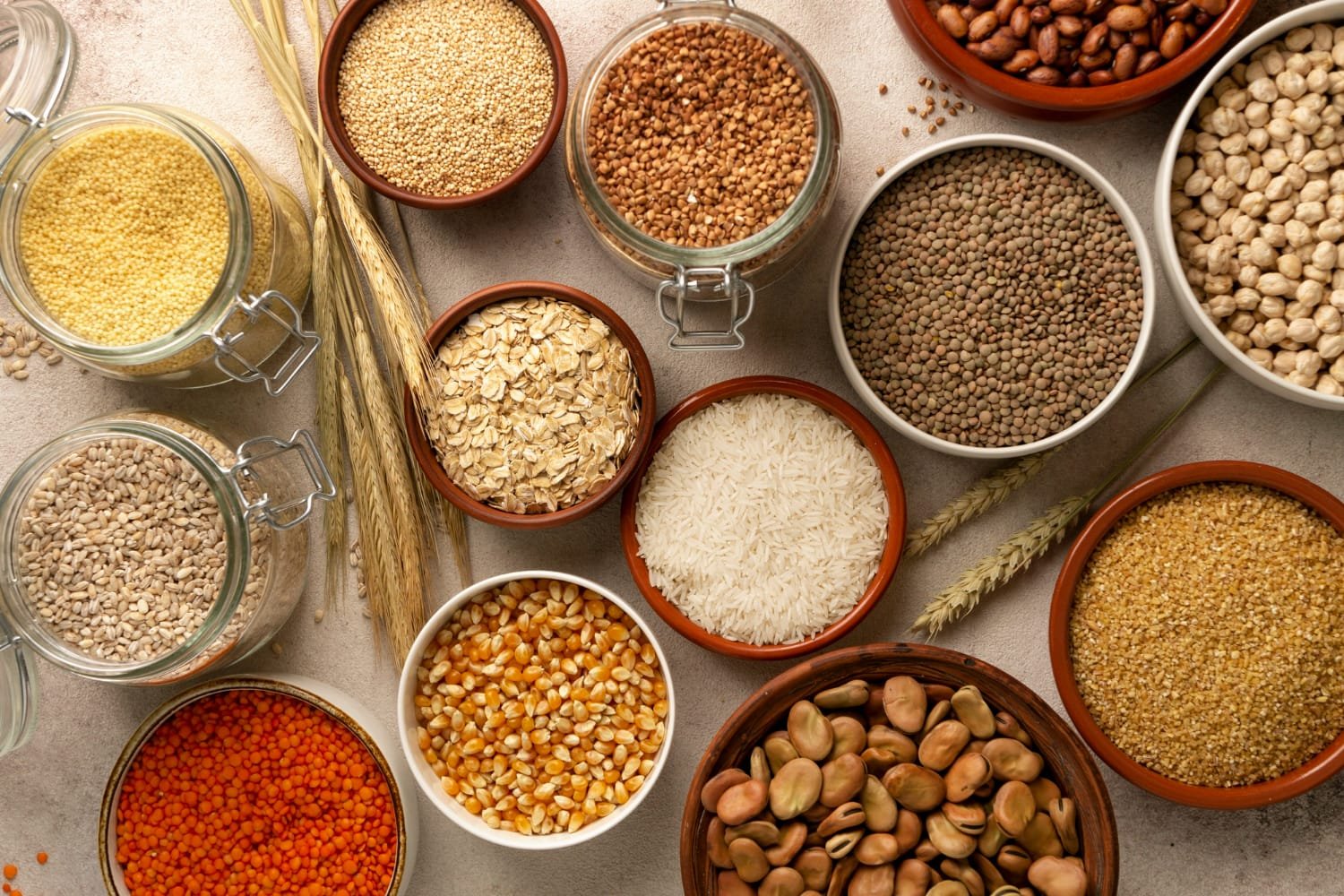
Whole grains like brown rice, quinoa, and oats are rich in fiber, which plays a vital role in hormone balance and detoxification. By promoting the healthy elimination of excess estrogen, these grains help prevent the growth of uterine fibroids.
They also regulate blood sugar levels, reduce inflammation, and provide essential nutrients like magnesium and B vitamins, which are important for overall reproductive health. Incorporating whole grains into your diet can not only support a healthy weight but also improve your body’s ability to manage fibroids naturally.
8. Beans and Lentils
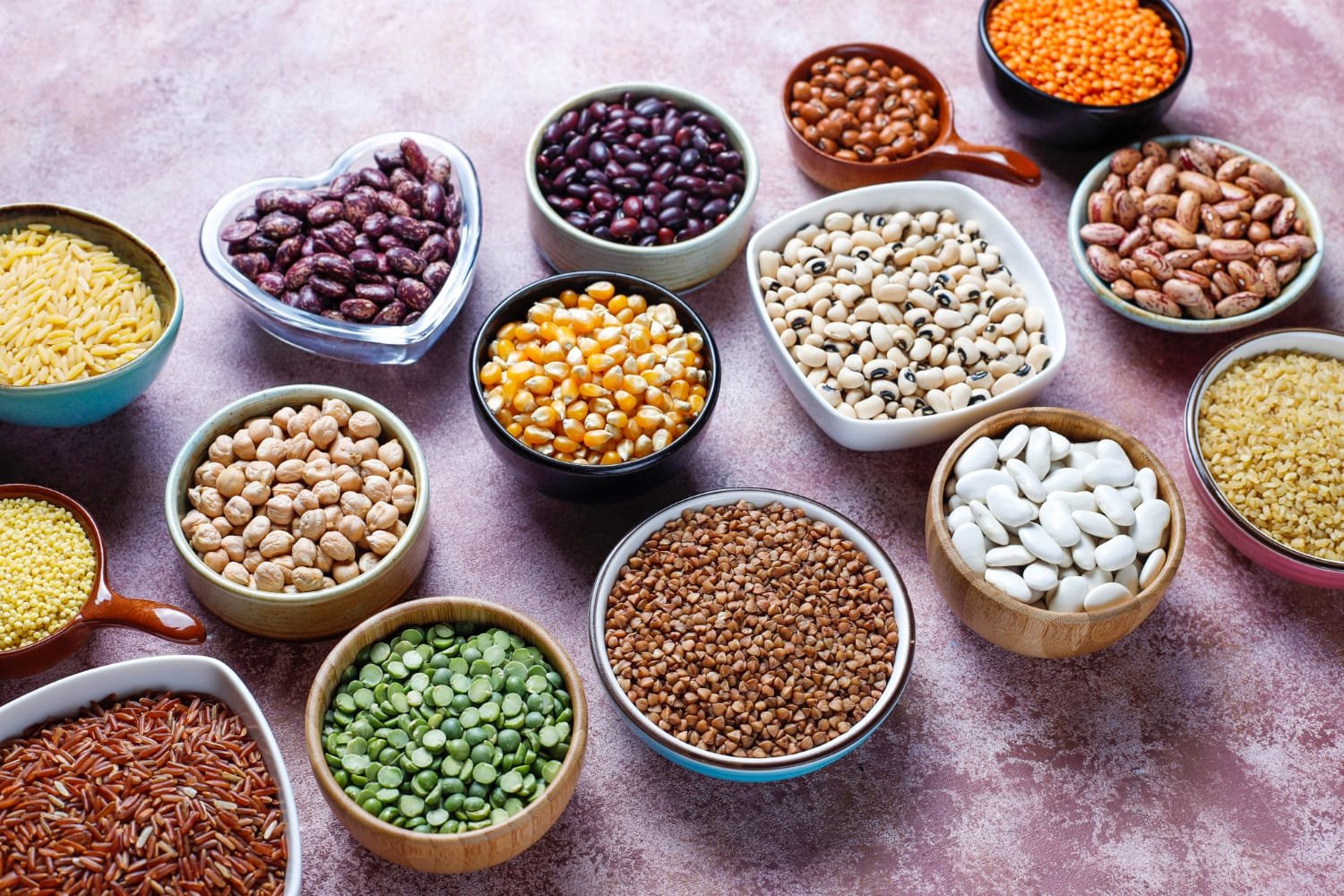
Beans and Lentils are excellent foods for managing uterine fibroids due to their high content of fiber, plant-based protein, and antioxidants. These foods help regulate hormone levels, especially estrogen, by supporting the liver in detoxifying the body.
Additionally, the folate found in beans and lentils plays a vital role in balancing estrogen metabolism, which is crucial in preventing fibroid growth. The fiber in these foods also promotes healthy digestion and helps eliminate excess estrogen, further reducing the risk of fibroid formation. Including beans and lentils in your diet can be a simple, effective way to support uterine health naturally.
9. Avocados
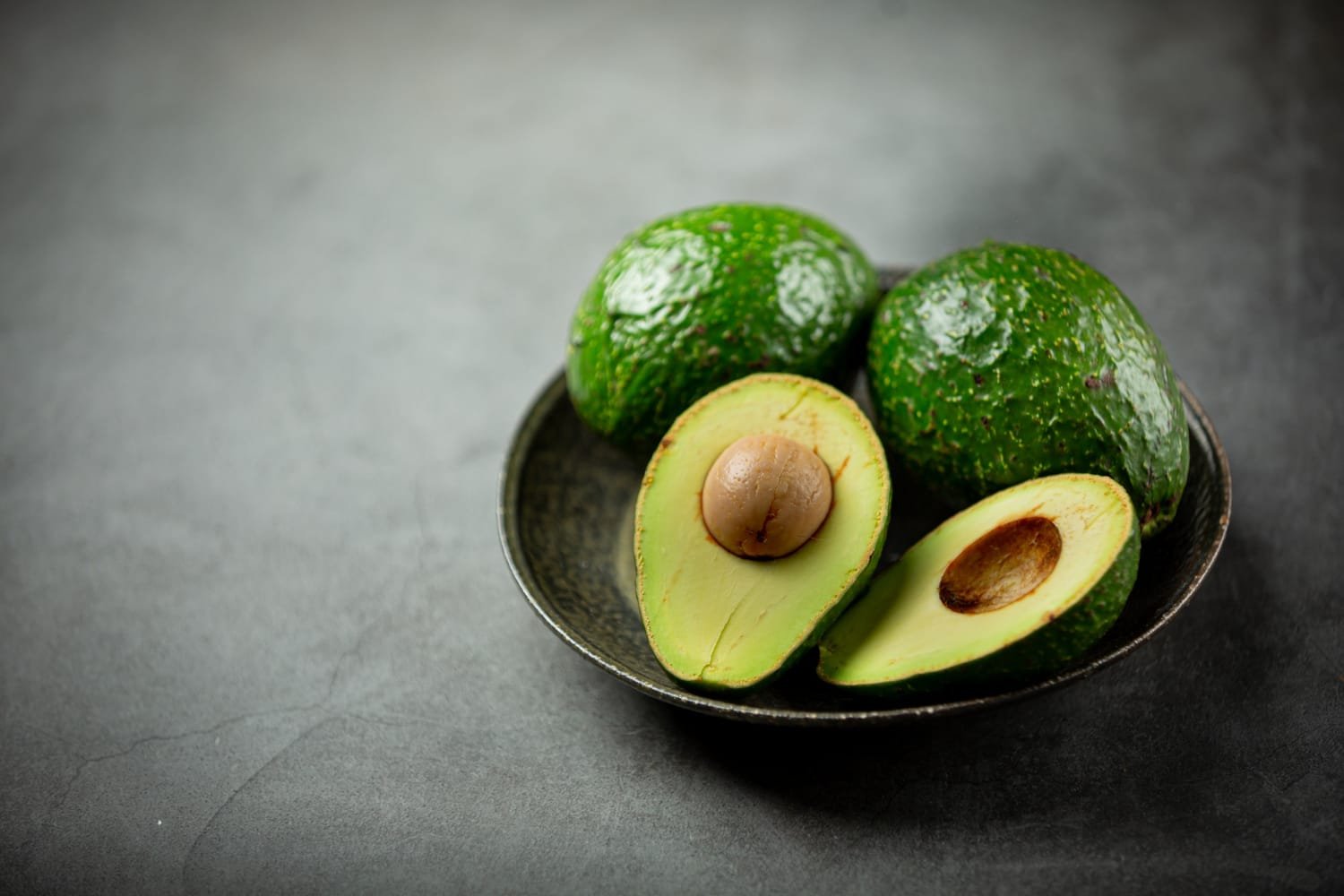
Avocados are an excellent food choice for managing uterine fibroids due to their rich content of healthy monounsaturated fats and vitamin E. These healthy fats help reduce inflammation in the body, which is often linked to fibroid growth.
Additionally, vitamin E is a powerful antioxidant that can help balance estrogen levels, one of the key hormones involved in fibroid development. By supporting hormonal balance and reducing inflammation, avocados may help slow the growth of fibroids and ease related symptoms. Regularly consuming avocados can also promote overall reproductive health and well-being.
10. Green Tea

Green tea is known for its powerful antioxidants, particularly catechins, which have anti-inflammatory and anti-cancer properties. These compounds help reduce oxidative stress and inflammation in the body, both of which can contribute to the growth of uterine fibroids.
Research suggests that green tea may help shrink fibroids by lowering estrogen levels and promoting liver health, essential for hormone regulation. Regularly drinking 1-2 cups of green tea may support the body’s ability to manage fibroids naturally and reduce their size over time.
11. Pomegranate
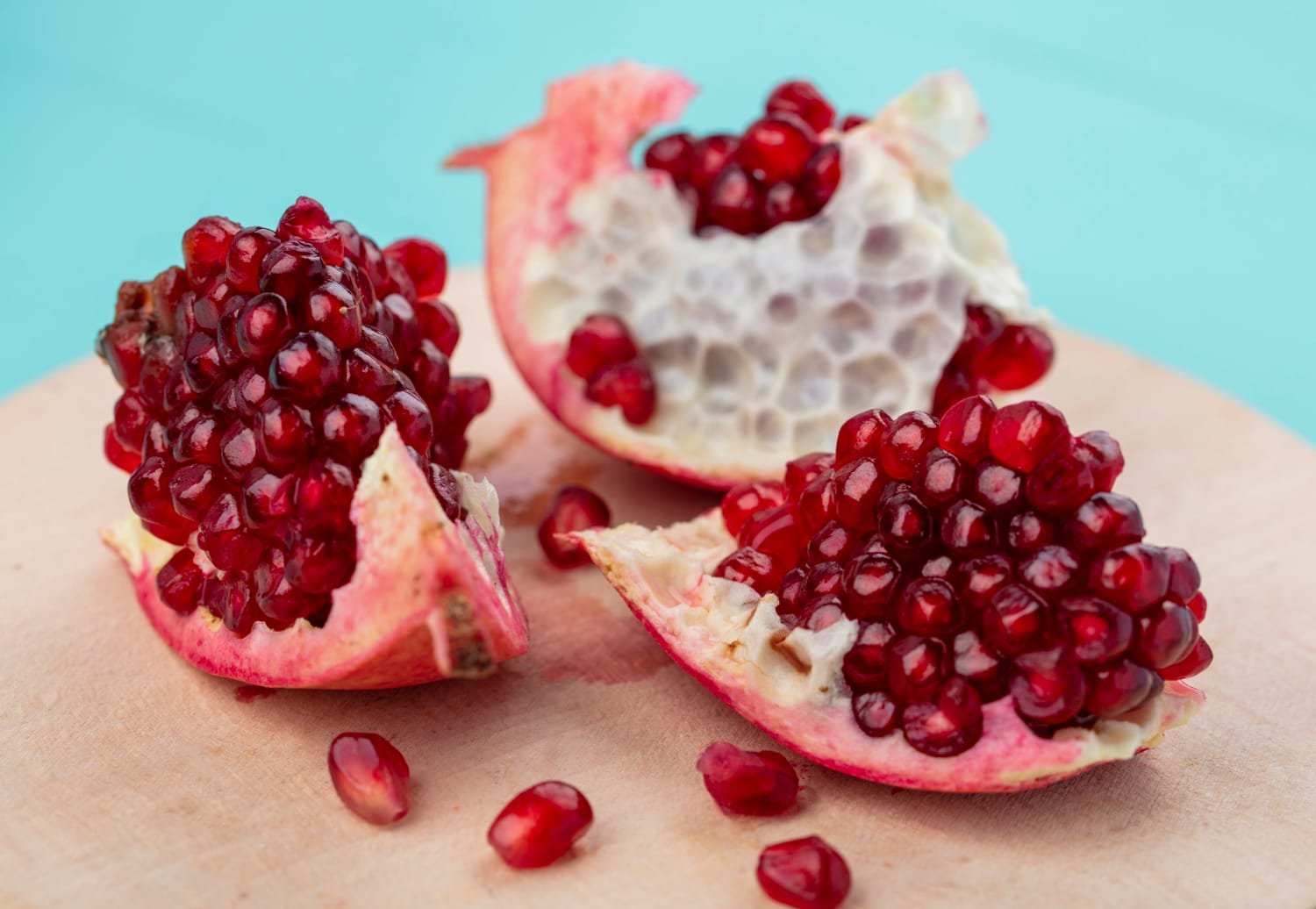
Pomegranate is packed with antioxidants, particularly polyphenols, which have anti-inflammatory and anti-cancer properties. These antioxidants help combat oxidative stress and reduce inflammation in the body, both of which can contribute to fibroid growth. Studies suggest that the compounds found in pomegranate may help regulate estrogen levels, thus preventing fibroids from growing.
Additionally, pomegranate’s high vitamin C content can support overall immune health and enhance the body’s ability to detoxify. Regular consumption of pomegranate, whether in juice or whole fruit form, may help reduce fibroid size and alleviate related symptoms.
12. Nuts and Seeds (Almonds, Walnuts, Sunflower Seeds)
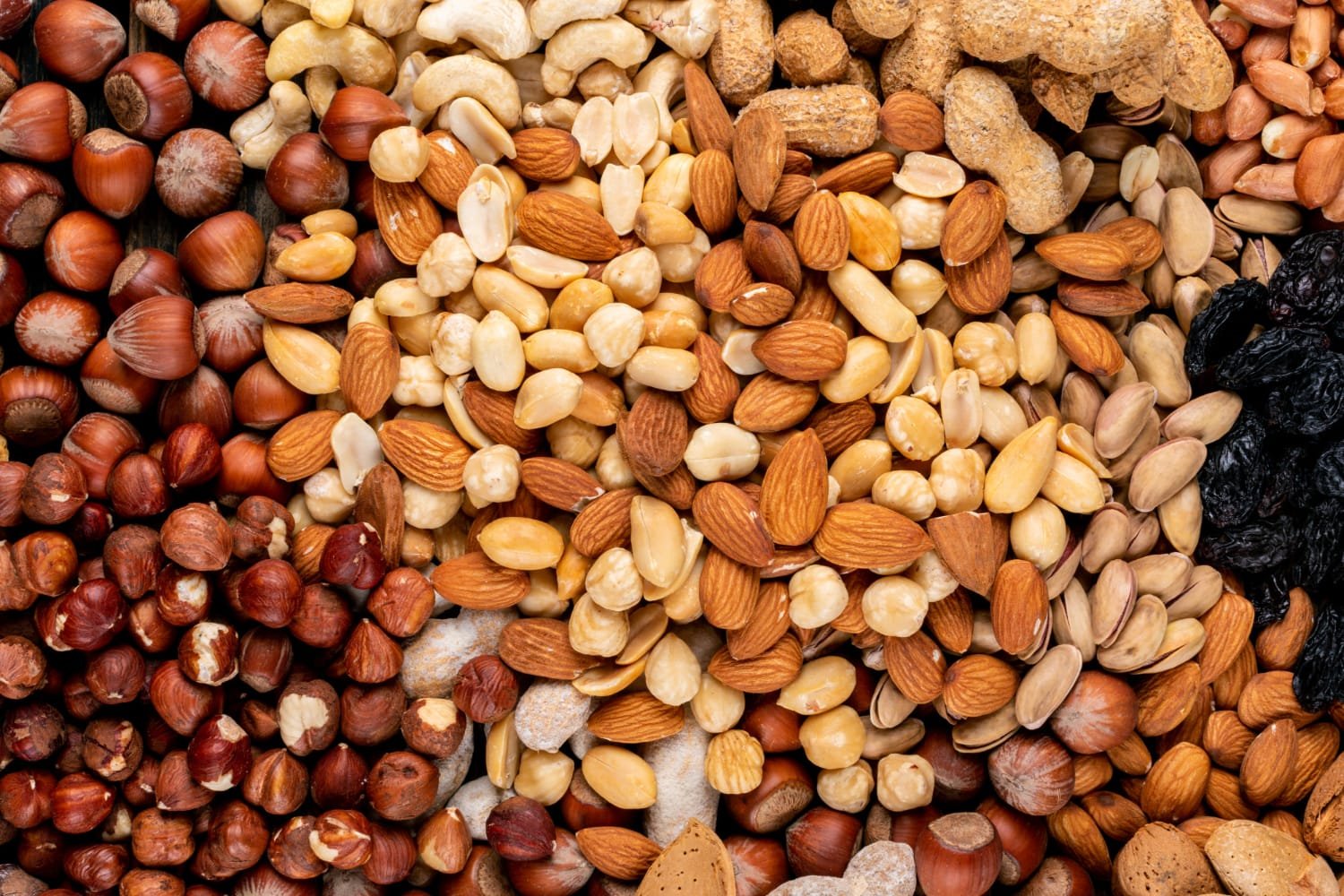
Nuts and seeds, particularly almonds, walnuts, and sunflower seeds, are rich in healthy fats, fiber, and antioxidants that help support overall hormonal balance, which is essential in managing uterine fibroids. They contain magnesium and vitamin E, which are known to help reduce inflammation, promote liver detoxification, and regulate estrogen levels in the body.
These nutrients are crucial in preventing the growth of fibroids and shrinking existing ones. Adding a handful of nuts and seeds to your daily diet can provide essential nutrients that support your body’s natural healing processes and help manage fibroid symptoms effectively.
Conclusion:
Incorporating these 12 foods into your daily diet can help you manage uterine fibroids naturally by balancing hormones, reducing inflammation, and supporting overall reproductive health. A balanced diet, combined with a healthy lifestyle, can make a significant difference in managing fibroid symptoms. Always consult with your healthcare provider before making significant dietary changes, especially if you’re undergoing treatment for fibroids.
Images- freepik

